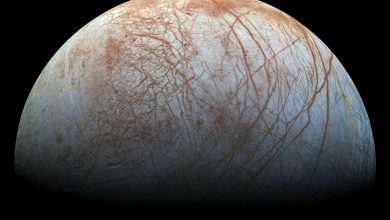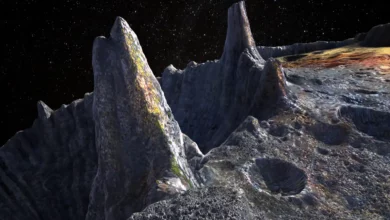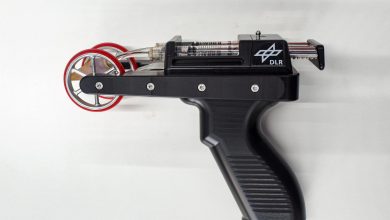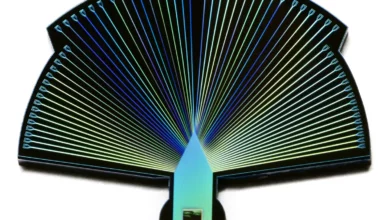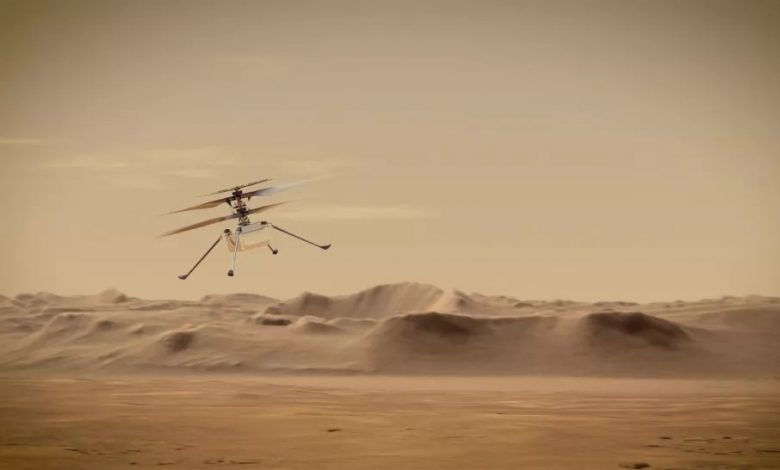
NASA’s wheeled rovers have revealed an incredible amount about Mars. From learning about the planet’s wet history and discovering the chemistry of its soil, to the puzzling presence of methane in its atmosphere, the rolling robots have been indispensable in painting a picture of one of Earth’s closest neighbors. They are remarkable, but they can’t cover a lot of ground — slow movement is critical to prevent them from tumbling over a cliff or colliding with a rock.
But unfortunately they cannot fly short distances.
Strapping a set of wings to a robot on another planet would open up a whole new way to explore other worlds. “The ability to fly wherever you want, at great speed, for a closeup view without risk of damage from collision or fall, is a thrilling capability,” says Alan Duffy, a professor in astrophysics at Swinburne University in Australia.
That’s exactly what NASA has done with Ingenuity, a tiny, lightweight rotorcraft scheduled to take flight on Mars on April 11. If it flies, it will be the first time humans have achieved powered, controlled flight on another planet — a Wright brothers moment in another part of the cosmos.
There are significant challenges to flying on Mars, however, and Ingenuity has to contend with a planet that particularly enjoys killing spacecraft. Should it succeed in getting off the ground, it will pave the way for future missions, deeper in the cosmos.
Here’s why Ingenuity is so ingenious.
Preflight checks
If you’re wondering how NASA got a helicopter to Mars and feel like you haven’t heard too much about it, it’s probably because NASA’s Perseverance rover stole all the limelight. Ingenuity is a “ride-along” mission and a tech demonstration. It isn’t on Mars to perform any science. Rather, it’s built to show that powered flight is possible on another world.
Ingenuity was tucked away in the belly of Perseverance during the rover’s long sojourn from Earth to Mars, which kicked off in July. The rover landed on the planet back in February, and Ingenuity was safe and sound from the harsh, cold Martian surface until April 4, when Perseverance carefully deposited the chopper onto the soil.
While on board Perseverance, Ingenuity was protected and powered by the rover’s suite of instruments. But after it was dropped off, and Perseverance rolled away, Ingenuity was cold and alone — quite literally. Mars temperatures plummet well below freezing at night, to around minus 130 degrees Fahrenheit. Fortunately, Ingenuity showed it can cope with the cold when it survived its first night separated from its rover pal.
The relationship with Perseverance hasn’t ended, though. When Ingenuity takes its first flight, it will be Perseverance that relays those messages back to Earth
On April 6, Ingenuity took its first photograph of Mars, a low-resolution, orange-and-brown snapshot of the surface. It’s not much, but if you want to get technical, it’s the first time a vehicle capable of flight has taken a photo of the red planet’s surface, so that’s pretty cool.
The cabin doors are now closed
There are a ton of challenges to achieving flight on Mars, but the major one is the air.
There’s a stark difference in atmosphere between the red planet and Earth. The Martian atmosphere is incredibly thin compared with our own, so achieving lift is far more difficult. Ingenuity is designed to deal with this problem. While we’ve already called it everything from a chopper to a flier, a helicopter to a rotorcraft, the tech it most reminds me of is a drone.
However, its blades are much larger than those for a similar-sized craft on Earth, and they spin at around 2,400 rpm — six times faster than on an Earth-based craft. At this speed and size, Earth-based tests have shown Ingenuity should be able to get off the ground on Mars without issue.
Unlike a drone, though, no one is piloting the vehicle in real time. The Ingenuity team had to upload instructions to the craft well in advance and will then receive data back after it’s made its flight. Ingenuity is designed to be very autonomous and to keep itself healthy during the communications delay between the two planets.
Prepare for takeoff
Prior to Perseverance’s landing in Jezero Crater on Feb. 18, the Ingenuity team was looking for an “airfield” and surrounding “flight zone” — a flat, mostly empty area on Mars’ surface that won’t jeopardize the safety of Ingenuity.
Fortunately, there was one basically next door to the landing site. “We began to realize we might have a really great airfield, right in front of our noses,” said NASA’s Håvard Fjær Grip, the chief pilot for Ingenuity. Grip says the team looked at “every rock and pebble” before deciding on home base for the helicopter.
Within 30 sols (about 31 Earth days), Ingenuity plans to make five flights, but the first is the most important. It will be a fairly simple flight.
The rotorcraft will take off, straight up, to an altitude of around three meters (around 10 feet) and hover in place for around 30 seconds. Then it will make a small turn, before coming down and landing again. During the flight, Ingenuity’s eyes and brain will be working overtime, preprogrammed by the team to keep the craft safe.
It will be snapping 30 images per second of the ground to understand where it is and to make any necessary trajectory changes — around 500 times per second, according to Grip. This autonomy ensures Ingenuity won’t be blown off course by a sudden Martian gust.
Future missions
As NASA engineers have reiterated many times: Ingenuity is a “technology demonstration,” just like the very first Mars rover, Sojourner, which rolled across the planet in 1997.
In many ways, Ingenuity has already succeeded: It survived the journey to Mars, set itself up on the planet and survived its first night alone in the cold. Its first flight will be momentous, not just for Mars exploration but for exploration of our entire solar system.
“If Ingenuity proves that we can successfully pilot aircraft on other planets, it will hugely expand the options for exploration in the future,” says Jonti Horner, a professor of astrophysics at the University of Southern Queensland.
Flight is a powerful tool for exploration. If robots can stay in the air, they’ll be able to ascend mountainous regions quickly, to investigate cracks in hillsides, to fly over lakes or lakebeds and to move quickly to avoid danger. With the right equipment, they may be able to snatch samples and bring them back to a rolling robot, too. You can even imagine a Mars rover-rotorcraft combo in the future, allowing space agencies to scout their landing location more accurately and decide on the best place to roll to the following day.
There are other missions — and worlds — that will benefit from Ingenuity’s demo, too.
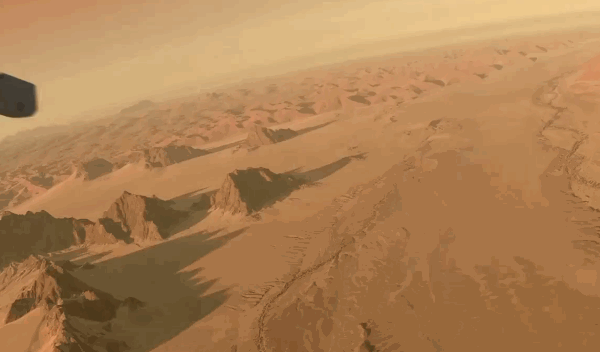
One such mission is NASA’s Dragonfly, which Horner calls Ingenuity’s “big sister,” That mission will visit Titan, one of the most intriguing moons of Saturn. The moon is rich in organic matter, contains a nitrogen-rich atmosphere like Earth, and is home to massive methane lakes and storms. It may even contain signs of life, past or present.
“Titan is unlike any other place in the solar system, and Dragonfly is like no other mission,” says Thomas Zurbuchen, NASA’s associate administrator for the science mission directorate. It’s a little more ambitious than Ingenuity, with the spacecraft containing all the necessary instruments to search for signs of life and to study the Selk impact crater, which is suspected to have once held liquid water. Dragonfly is scheduled to launch in 2027 and to reach Titan by 2034.
If Ingenuity gets off the ground, the dream of otherworldly flight will become a reality — ushering in the next era of planetary space exploration.

